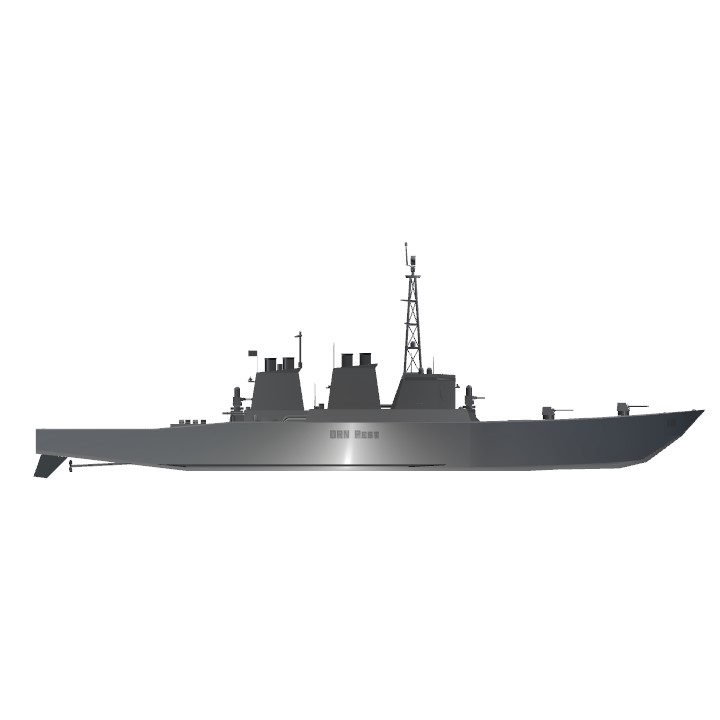Lore
And the timeline continues
The DRN Pest, a state-of-the-art guided missile destroyer (DDG), was commissioned in 2038 as part of Hungary’s dramatic military resurgence following the collapse of the Austro-Hungarian Empire in the Third World War. With the acquisition of Croatia’s coastal territories along the Adriatic Sea, Hungary was no longer landlocked, and for the first time in centuries, it became a maritime power with direct access to international waters. The DRN Pest represented Hungary’s newfound ambition to protect its coastal assets, control key Adriatic trade routes, and reassert its dominance in a post-imperial world.
The end of World War III in 2035 saw the defeat of the Austro-Hungarian Empire at the hands of the Russian Federation. The Empire, which had held together various Central European territories, including parts of the Balkans, disintegrated after a series of military losses and internal uprisings. In the aftermath, Hungary emerged as an independent nation, retaining significant territories from its former imperial holdings, including Croatia’s coastal regions along the Adriatic Sea.
This newly acquired access to the sea provided Hungary with opportunities for trade, power projection, and resource security, but also made it vulnerable to naval threats from surrounding powers and factions operating in the fragmented post-war landscape of Europe. With the Russian Federation dominating Eastern Europe and other regional powers vying for influence, Hungary needed to build a modern navy capable of protecting its new maritime borders.
Recognizing the strategic importance of the Adriatic coastline, the Danubian Royal Navy (DRN) was established as Hungary's maritime defense force. The DRN was tasked with safeguarding Hungary's coastal cities, defending crucial shipping lanes, and securing the country's new maritime sovereignty. The first major project undertaken by the DRN was the creation of the Pest-class Guided Missile Destroyers, a fleet of highly advanced warships designed to project power across the Adriatic and beyond.
The DRN Pest, named after Hungary’s capital, Budapest, was the lead ship of this class and represented Hungary's commitment to naval dominance in the region. The destroyers were built with cutting-edge technology, combining lessons learned from both riverine warfare and modern naval tactics. Though Hungary had no previous history of constructing large destroyers, the national effort to build a world-class navy bore fruit in the form of the Pest and its sister ships.
The DRN Pest was a versatile and lethal ship, designed to engage multiple types of threats, from enemy ships and submarines to air and ground targets. Its weapon systems made it a force to be reckoned with in the contested waters of the Adriatic.
The ship featured a helicopter landing pad capable of supporting a multi-role naval helicopter, used for anti-submarine warfare (ASW), search and rescue missions, and reconnaissance over the vast Adriatic waters.
Two CIWS turrets were mounted on the ship, providing last-ditch defense against missiles, drones, and small boats, ensuring the Pest could defend itself in high-intensity combat.
The DRN Pest was equipped with two triple-tube torpedo launcher turrets, carrying a total of six torpedoes. These torpedoes were designed for anti-submarine warfare (ASW) and could also target enemy surface ships, making the Pest versatile in both surface and underwater combat.
The DRN Pest was commissioned in 2038 at the newly built naval dockyards in Rijeka, Croatia. It was the first warship completely designed and built by Hungarian engineers and shipbuilders, making it a monumental achievement for the newly independent Hungary. The Pest-class destroyers were seen as not only a military success but also a symbol of national pride and technological innovation.
A total of 50 Pest-class destroyers were produced between 2038 and 2048, with Hungary selling 7 of these highly sought-after vessels to Germany, generating vast revenue that further fueled Hungary’s military-industrial complex. The sale to Germany also cemented Hungary’s position as a key player in the region, signaling the emergence of the Danubian Alliance, a new bloc of Central European powers united against external threats, particularly the Russian Federation and rogue naval factions operating in the Mediterranean.
The DRN Pest and its sister ships saw action almost immediately following their commissioning. In 2040, during the Adriatic Crisis, where rogue states and pirate factions emerged to take control of the valuable shipping lanes in the Mediterranean, the DRN Pest spearheaded Hungary’s naval task force, successfully defending Hungarian and German merchant fleets from attacks. The destroyer’s anti-boat missile systems and CIWS were credited with intercepting multiple threats, including missile attacks from hostile forces operating out of Montenegro.
The Pest remained in active service for over two decades, with regular upgrades to its weapon systems and electronic warfare capabilities. In 2065, it was decommissioned, having fulfilled its role as the first great destroyer of the Danubian Royal Navy and cementing its place in Hungarian history.
- Produced: 2037-2050
- Number Produced: 50
- Commisioned: 2038
- Manufacturer: Rijeka Haditengerészeti Dokk
- Nation: New Hungarian Republic
Info
Use Aim Cam to target
TRIM - Control Missile Hub Doors
VTOL - Torpedo Rotation
2 - Flak Guns & CWIS
3 - Boater Missiles
4 - Right Side Close Range Ground Missiles
5 - Left Side Close Range Ground Missiles & torpedo control
6 - Launch all torpedos at once
YAW - Turn the ship
This took way too long
Specifications
Spotlights
- DISHWASHER2005 1.2 years ago
- MonsNotTheMonster 1.2 years ago
General Characteristics
- Created On Windows
- Wingspan 65.6ft (20.0m)
- Length 429.2ft (130.8m)
- Height 140.8ft (42.9m)
- Empty Weight 140,552lbs (63,753kg)
- Loaded Weight 177,491lbs (80,509kg)
Performance
- Power/Weight Ratio 0.379
- Horse Power/Weight Ratio 0.022
- Wing Loading 249.6lbs/ft2 (1,218.5kg/m2)
- Wing Area 711.2ft2 (66.1m2)
- Drag Points 184753
Parts
- Number of Parts 462
- Control Surfaces 0
- Performance Cost 1,787







Literally the destroyer beside uss beast